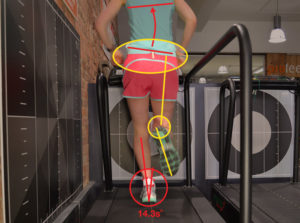GAIT RETRAINING – CAN IT HELP?

Gait analysis is a term that most runners are familiar with.
Whether they be high level athletes being tested in a lab setting, or commonly the recreational runner undergoing analysis in a shop whilst choosing a new pair of running shoes.
Although the process seems very fancy and technical, it is important to remember that there is no perfect way to run, there are induvial differences in everyone. There is not a one stop approach for gait analysis. No one style of running that works for everybody.
- There is no uniform ideal way to run.
- There is little evidence to link certain foot positions to injury.
- Shop workers often may not have a sufficient biomechanical knowledge base.
- The running shoe industry is based on maximizing sales. We must be mindful of this when considering ‘specialist ’footwear for specific foot positions.
There is little evidence to support particular running shoe styles on gait analysis findings. Changing the running technique in an uninjured runner may in fact impair their performance unnecessarily. That being said, there is some research to suggest that running technique accounts for a lot of variance in running economy and performance (Folland et al., 2017). The manner in which any changes are coached would undoubtedly reflect the success of the intervention.
PAIN.
Where gait analysis may really be useful is when a runner is experiencing pain. Analysis may help us to determine whether a runner’s gait may be placing additional stress on sensitive tissues. For example, a runner whose knees almost touch is exhibiting high hip adduction, a risk factor for anterior knee pain. Therefore we could aim to alter the mechanics and see if there is a positive effect on pain.
Even in this scenario, gait analysis would be just one piece of the puzzle. It should be used as part of a quality rehab programme, alongside education, load management, and tailored exercises.
STRUCTURE.
A good thorough gait analysis should be split into four stages. The whole gait cycle, head to toe, should be examined, systematically looking at:
- Overall running kinematics
- Foot strike and transition
- Stride length and step rate
- Step width
This ensures that everything is considered, not just what is happening at the feet – which often becomes the sole focus in a lot of gait analyses.
Changes must be coached simply and effectively. Introducing wholesale changes to quickly is likely to have a negative effect on the runner.

GAIT ANALYSIS SUMMARY.
This is a brief breakdown of gait analysis to hopefully give you insight into what it does and does not do, where it may be useful, and where it may not.
If you are a runner in the Nottingham or Melton Mowbray area and are unsure whether you may benefit from gait analysis, please get in touch HERE and I will be happy to help with any questions you may have.


